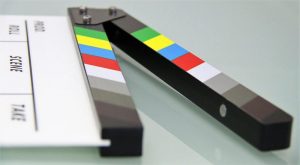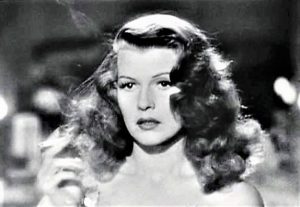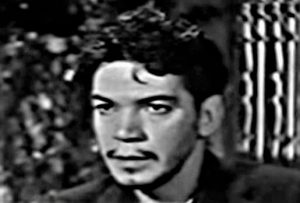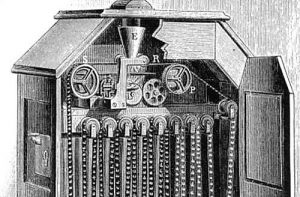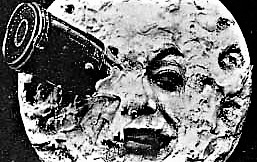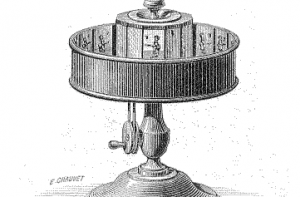Clapperboard
When shooting a movie, images and sound must be recorded separately. The image is recorded on film by the camera, and the sound is recorded on an analog tape recorder or, as is more recently done, on a digital tape such as DAT tape. Because they are recorded on two different devices, you need a suitable way to synchronize them. The best way to synchronize these two aspects is through a clapperboard, also known as a black and white board which is the most traditional way to achieve and manage synchronization.
What is a clapperboard?
The clapperboard is an instrument that is used in the cinema that is made of a double plate, the first one and a quarter of a size the second one, which are joined through a hinge, and which are generally made of wood, acrylic or some other rigid material.
Definition
A very simple definition of what the clapperboard means is to say that it is a board in which each shot of a film must be recorded, and then identify its parts when mounting the images with sound. It is a tool that allows us to make a proper synchronization of the image taken in a camera with its respective audio.
Also exist in the market, the electronic clapboards that are those that have like added value the characteristic that can be shown through displays the time code to be able to make the edition easier and to be able to synchronize with greater facility the movie from the determined moment of time.
Clapperboard characteristics
The most outstanding characteristics are the following:
- There are two types of clapperboard, the final that is made after the cut, and the silent clapperboard that is used when the shot that is being recorded does not have any type of sound.
- The sound of the clapperboard is used to indicate that the camera has begun to film.
- It is made of a double plate, the first part of which is smaller than the second and they are also joined by means of a hinge.
- They are usually made of material such as wood, acrylic and some kind of hard consistency material.
- Its measurements are usually between 30 and 40 centimeters.
- Many of them are painted on the background in black or white, generally used as board or a type of panel in which the data are placed with white chalk and special markers.
- It is placed in front of the video camera so that, the data is incorporated in the segment of the film.
- In its upper part is placed the name of the production and in the lower part is placed the scene number, the shot, the roll or cassette and the name of the director, cameraman and date.
Origin
Years before the clapperboard that is known today existed, there was already a very similar device with a form of a slate which was placed at the beginning of each film shot in order to be able to see in the foreground the plane and what the shot was about. With the birth of the sound, the “clack” was added to the blackboard. This invention is attributed to the Australian Frank W. Thring, who in the 1920s, when sound began to be used in films, invented a way to facilitate the work of the teams and the direct shooting, inventing the clapperboard.
What is the clapperboard for?
Within the shooting of a film, the clapperboard has several uses, among which we can mention the following:
- It helps to indicate the type of production: this because in the clapperboards must always be placed the production name, in other words, must place the title of the film, it also writes the name of the director, and the photography director.
- Enumerate the number of the roll or card: in the past, this action was carried out using many different celluloid rolls and these rolls were numbered so that, the laboratory could control them properly. Today, with the birth of the digital era, the roll number has been changed to the memory card or hard disk
- List the plans and shots: the clapperboard also serves us so that the assembler or his assistant are able to organize all the material that is located in the software that is used to carry out the assembly of the film.
- Synchronize image and sound: as they are not recorded at the same time, for practical and quality reasons, these two very important aspects are recorded separately but then they must be synchronized. The “clack” is what is used to be able to join them later and so that they achieve to be perfectly synchronized.
Importance
The clapperboard is of great importance both in cinema and in video and digital cinema because together with the script are responsible for facilitating the search for the right shot. It is also important because it is through it, that each part of the film is recorded, using the sound of the clapperboard to synchronize the movements of the actors with what is said in the film.
How to make a clapperboard
Below we mention a series of steps for you to make a clapperboard:
- Cut a piece of wood that measures 54 cm by 50.8 cm in half. Each of the pieces should measure 1 by 25.4 cm. These pieces will be used on the movable part of the plate.
- A rectangular plywood sheet should be measured and cut so that it is 25.4 cm long by 20.32 cm high.
- Nail one of the 1 by 25.4 cm pieces of wood to the top of the plywood.
- The second 1″ by 25.4 cm piece of wood should be placed at the top of the first piece by means of the brass hinge. The hinge must be well positioned at the end of the wood so the top piece can be opened up and down.
- Using slate paint, we will proceed to cover the surface of the wood in order to be able to write on the slate with a chalk and thus be able to mark each shot. Before continuing, we must let the paint dry completely.
- Write in each area of the table the information that will be needed during the shoot, which may include the name of the production, director, date, plan number, scene number and shot. Once the paint has dried, the clapperboard can be used.
How to cite this article?
Briceño V., Gabriela. (2019). Clapperboard. Recovered on 3 January, 2025, de Euston96: https://www.euston96.com/en/clapperboard/
